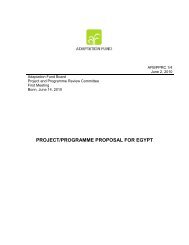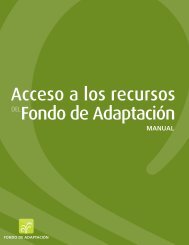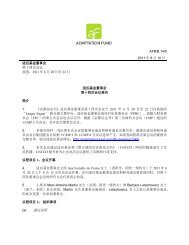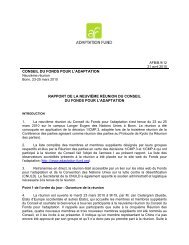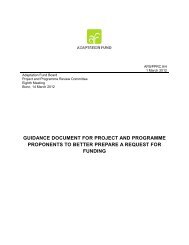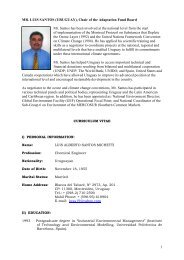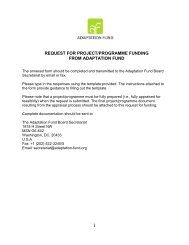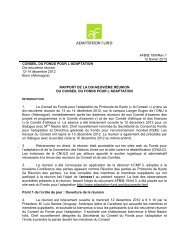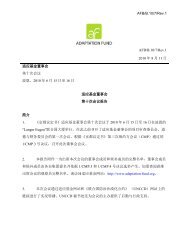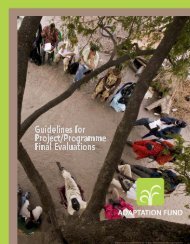PROPOSAL FOR MALI - Adaptation Fund
PROPOSAL FOR MALI - Adaptation Fund
PROPOSAL FOR MALI - Adaptation Fund
You also want an ePaper? Increase the reach of your titles
YUMPU automatically turns print PDFs into web optimized ePapers that Google loves.
Besides climate impacts, there are anthropogenic drivers under human activities affecting theFaguibine system which amplifies the depleting water resources of the system. Siltationunder human-induced land use changes and unsuitable agricultural practices resulting in soilerosion, increases the amount of sedimentation occurring. Siltation coupled with rainfallfluctuations in Guinea (the main source of the river Niger feeding the Faguibine system, andparticularly Lake Faguibine) has been gradually decreasing the water level of the lake sincethe mid-seventies, as illustrated by the satellite images in Figure 3. Many of the canalslinking the Faguibine system are silted and blocked thereby increasing loss of water.Unsuitable land use practices such as expansion farming land encroaching into thefloodplain areas and riverbeds has reduced the natural storage capacity of the floodplainthus exacerbating the risk of flooding in other locations as well. This has severely destroyedthe system‟s ability to act as a buffer in retaining water as rainfall becomes moreunpredictable.Figure 3: The total area of Lake Faguibine in 1978 (up) and in 2006 (below) (UNEP 2008)AgricultureAgriculture is the main economic activity in the basin and accounts for employment of themajority of the population of Mali. The numerous effects of climate change and variabilitysuch as irregular rainfall pattern, high temperature, long dry period, flash floods and droughtshave made agricultural production increasingly challenging. Crop productions in the Moptiand Timbuktu regions are particularly vulnerable to climate change following the irregularityin rainfall affecting productivity and the lack of sufficient water for supplemental irrigation.Climatic changes have meant greater incidence of pests and pestilence, which means a lossof quality and quantity in production. Models predict between 20 to 34% decrease in the yieldof millet and sorghum by 2020 and 30 to 40% by 2050 15 . It is estimated that the risks ofchronic hunger, taking into account future climate change, might more than double.Communities in these regions are under increasing pressure to grow staple crops on15 Updating survey of climate change scenarios in Mali. National Scientific and Technological ResearchCenter.200920



